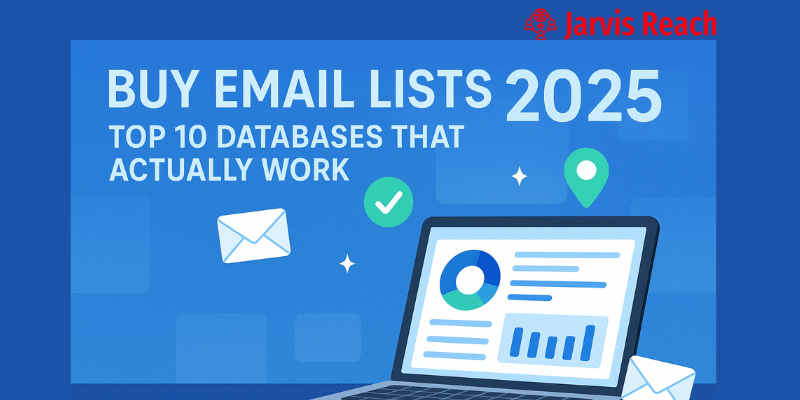I still remember the first time I sent an email to a handful of subscribers and got a reply that changed my whole approach. It was a short message, sent to an email list I’d built from a few blog readers and a couple of conference contacts. One reply said, “Finally someone who gets the problems we face.” That single note convinced me that an email list for marketing wasn’t just a channel: it was a relationship.
If you’re building email list strategies in 2025, the landscape looks familiar but different. The basics of list building and good content still matter, but new pressures privacy, AI, and platform changes are reshaping how we collect, talk to, and keep subscribers. Here’s what I’m watching (and testing) right now with practical angles you can use whether you manage a B2B email program or run a small eCommerce mailing list.
1. Privacy-first collection: quality over quantity
We’ve moved from “how many” to “who and how.” With cookies fading and stricter consent rules, marketers can’t rely on broad tracking or shady list building. That means:
- Emphasize permission: clear opt-ins, transparent forms, easy preferences.
- Use progressive profiling: ask for small pieces of data over time so subscribers don’t bounce at the sign-up stage.
- Prioritize engaged subscribers: prune inactive addresses instead of hoarding them.
I once inherited a massive mailing list that looked great on paper until delivery rates tanked. After a three-week re-engagement push and a cold-clean sweep, open and click-through rates improved dramatically. The lesson: a cared-for mailing list performs far better than a bloated, ignored one.
2. AI personalization, minus the creepy factor
AI isn’t a magic wand, but it’s the best assistant you’ve had. In 2025, AI helps with:
- Subject-line testing and micro-segmentation.
- Predicting which offers a user will likely open or ignore.
- Generating personalized content blocks (not entire emails — use sparingly).
Crucially, personalization should feel helpful, not invasive. Use signals people knowingly gave you (past purchases, topics they selected) rather than inferred data that surprises them. For B2B email programs, AI that segments by company size, role, and buying stage is already paying dividends — but pair it with clear context: “We analyzed your interest in X to recommend this.”
3. Interactive email experiences (without breaking the inbox)
People want to do more inside their inbox: RSVP, answer a quick poll, or preview a product. Interactive email elements and server-side rendering (like AMP for Email in supportive clients) let you do that. Benefits:
- Reduce friction: fewer clicks, more action.
- Gather micro-feedback that helps your list building and segmentation.
Start small: add a one-question poll or a quick carousel of featured items. Test how your chosen mailing list service handles dynamic content and what works best across inboxes.
4. Zero-party data becomes a competitive advantage
Zero-party data — what users voluntarily tell you — is gold. In 2025, successful marketers design lightweight exchanges: a small reward for a preference update, a short quiz that customizes content, or a signup flow that asks for industry and role for a B2B email segment.
Why it matters: this data is accurate, permissioned, and crucial for relevant messaging. Make it obvious why you’re asking: “Share your role so we can send content that helps you today.”
5. B2B email: personalization + account-based orchestration
If you work in B2B email, 2025 is about combining personalized messaging with account-based choreography. That means:
- Coordinated sends across contact lists in the same company.
- Content tailored to buying stage, not just persona.
- Integrations between CRM, ABM tools, and your mailing list service.
A recent B2B campaign I saw used account signals to route leads into different nurture tracks. Instead of one-size-fits-all emails, contacts at the same account received messaging tuned to their likely business priorities — and pipeline conversion rose.
6. The rise of modular emails and reusable blocks
Create once, reuse everywhere. Modular design helps you deliver consistent experiences across campaigns while enabling personalization. Benefits include:
- Faster campaign assembly.
- Easier A/B tests on individual blocks (CTA, hero, social proof).
- More reliable rendering across clients.
Whether you use a simple mailing list service or an enterprise ESP, push for a component library your team can pull from.
7. Smarter automation — sequences, not spam
Automation maturity means thoughtful, triggered journeys instead of rapid-fire blasts. Focus on:
- Trigger relevance: send when the user action makes sense (download, trial start, renewal).
- Multi-step orchestration: combine email with in-app messaging and even human follow-up for high-value leads.
- Drift detection: watch for signals that suggest a subscriber wants to hear less (or more).
Automation should feel like a well-trained concierge: timely, relevant, and unobtrusive.
8. Choosing the right mailing list service in 2025
Not all mailing list services are equal. When evaluating providers, think about:
- Deliverability track record and reputation management.
- Native or easy integrations with your CRM and analytics.
- Support for modular templates and interactive content.
- Advanced segmentation and AI features you’ll actually use.
If you’re just starting list building, a simple, reliable service that prioritizes deliverability and ease of use is better than a complex platform you can’t staff. For larger B2B programs, consider tools that support account-based workflows and deeper CRM syncing.
9. Metrics that matter: engagement, not vanity
Open rates are noisy. In 2025, focus on:
- Active engagement: clicks, replies, time spent with content.
- Conversion metrics tied to clear business goals (trial starts, demo bookings, revenue influenced).
- List health: deliverability, complaint rate, and churn.
Measure the journey, not just a single email. For example, track how a series impacts pipeline velocity rather than celebrating a single open.
10. Ethical growth hacks and partnership list building
Partnerships, co-marketing campaigns, and gated webinars remain strong list building channels — if done ethically. Swap value, not lists. Examples:
- Co-host a webinar and share a joint landing page that clearly explains how data is used.
- Offer useful resources in exchange for preferences, not just an email.
- Test micro-conversions (interest checkboxes) on existing traffic to grow targeted segments.
I ran a partner webinar that doubled our mailing list in a niche vertical — but only because the landing page clearly explained what subscribers would get and why it mattered to them.
Conclusion — Start small, think long game
If you take one thing away: treat your email list like a community, not an asset to be exploited. In 2025, list building is less about tactics and more about trust — earned through good data practices, relevant personalization, and thoughtful automation.
Next steps you can take this week:
- Audit your sign-up flows for clarity and consent.
- Pick one piece of zero-party data to collect and use it in a welcome series.
- Test a small interactive element in a campaign and measure real engagement.
If you want, send me one sentence describing your current email setup (ESP, list size, and goal) and I’ll suggest one specific change you can make this month.

